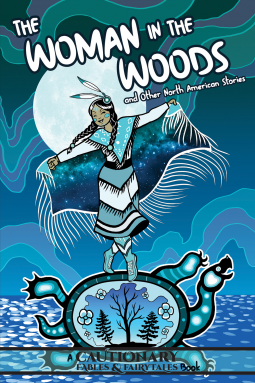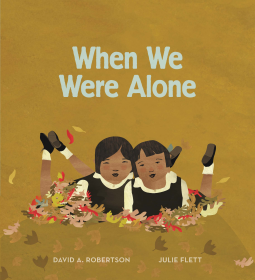The guests were all
gone. They only expected one tonight – Judge Reardon. They’d have time to go
into the woods today, hunting for herbs and the manroot. But Frieda went alone
as the girl looked a bit too peaked.
Alone, Katherine
cleaned the rooms again; it took no time, for they were already clean. She
lingered in Number 8, The Judge’s room.
She knew a lot about
him now, and she felt a very real presence that he left in the room. She knew
intimate things about him – like the size of his shirts, the smell of his
aftershave, which side of the bed he slept on, how he preferred his coffee, the
brand of cigarettes that he smoked…numerous details about him that she had
collected bit by bit, saving them in her mind and in her dreams, like pennies
to be spent at a later date.
He knew nothing of her
dusting his dresser, straightening the bed after he had risen. He was not aware
that while he was out, she pressed his shirts to her lips, inhaling his aroma,
and sat on the bed in the same crevices his body had made over the years that
he had slept here. Now she knew with the wisdom and instinct of centuries, she
knew that what would be, would be.
Last week for the
first time she had seen it, the birthmark, on his right hand. It was paler than
the surrounding skin, crescent-shaped like a slice of the moon, and within its
outline, unmistakable, a perfect five-pointed star. She knew its shape by
heart, as just above her right breast she had its identical replica.
The Navajo blood
flowed strongly in her veins, with all its beliefs in the signs, even though
her father had tried vainly to smother these strange alien traits. Since her
childhood she had believed that she could speak to animals, and she could find
herbs hiding under any rock and knew exactly what they would cure.
She stayed dreaming in
the Judge’s room until she heard Frieda calling her. The woman had returned
from the woods, carrying a full burlap sack.
“You should have come
today…I found it…the time is ripe, and you’re much quicker than I. You would
have climbed the higher spots where it grows.”
Placing the sack on
the table, she pulled out one root. “It’s perfect…it’s prime, probably ten or
fifteen years old.” She held the root up to the light. Its torso similar but
lighter in color than a carrot, with no hint of orange, just tannish-brown, the
root seemed to have two arms, two legs, and a fine network of tendrils. It
appeared to be a miniature figure of a headless man.
“What is it?”
Katherine questioned as she stared at the unusual root.
“It’s a manroot!”
“The manroot,”
Katherine repeated, liking the sound of the word and feeling it described the
plant perfectly. “It seems as if it could contain magic?” she said, as she
gingerly touched it with a timid finger.
“Oh, they say it does.
It works wonders. The Orientals prize its properties – to them it is also the
love root. It does many things, cures most anything that ails you. For me it
lines my pockets – Bailey’s general store pays about four dollars a pound.”
Emptying the sack on the counter, Frieda explained, “You can’t let it get damp
– it ruins the root.” She began taking them out, examining and inspecting and
drying each root with a clean dish-towel.
“They’re not all like
this one, that’s special. Some don’t come with the likeness of arms and legs,
some just look like a pale carrot…but the old ones, the very special ones do.
Here, Katherine – take it, it’s yours.”
They sat at the table
and by habit Katherine helped her.
“If you weren’t such a
lazy girl, you could have come with me today. When these are dry, I’m sure
Bailey’s will be paying twenty dollars or so for the batch.”
“Twenty dollars?”
“Yes, ma’am!” She knew
the girl wasn’t lazy; it was her way of trying to shake her out of the
listlessness. “Put on the kettle, Katherine. I’ll slip a little of the root in
it. That will perk you up.”
They drank the tea,
and Frieda continued drying the root. She did a rare thing: she hummed as she
dried the fine tendrils.
“It takes time for the
manroot to grow. You shouldn’t harvest a root less than seven years old, and
you must always plant the seed when you harvest – each red berry has two seeds
– not deep, just under the leaves. It’s a sin…to harvest and not plant the
seed,” she said solemnly.
Katherine watched the
clock. “I better put on my uniform. The Judge…”
“No need to. When I
was coming in, he was headed for the Eagle’s Nest. He told me he wouldn’t be
wanting any supper.”
Katherine’s face fell
with disappointment.
In previous gossip
from Frieda, Katherine had learned that the Judge lived twenty miles up the
road with a wife who was said to be fragile since the births of her two stillborn
sons. There was not much in these parts that the Judge did not own; he was
rich, well-liked, respected, and known to be a fair man. Remarkably young to be
a judge, no one faulted him for his tendencies to card-playing, drinking
whiskey, and relieving himself with the local women. A lesser man with these
leanings would be called no account, but he was, after all, the Judge, and this
title brought with it a tendency to look at vices as virtues.
It was just another
Friday. Destiny waited for her; she felt it close, closer than it had ever
been.
The hotel was quiet.
There were no guests and the only person staying was the Judge, who would be
out late.
Katherine played the
radio softly, dancing about the room, pretending she was at Castlewood waltzing
under the lanterns with him. She put the perfect manroot in the Valentine box
with her other things. After midnight when he rang, Katherine shook the sleep
from herself when she realized the bell from Room 8 was ringing.
She owned no robe, and
the persistent ringing threatened to wake Mr. Taylor. She flew up to the
Judge’s room and knocked timidly, aware that her hair was down, and she was in
her nightgown. It was plain enough – white cotton, sturdy and sensible.
He opened the door to
her. He seemed surprised.
“I’m sorry, sir,
everyone is asleep,” she said, not really knowing how to apologize for her
attire.
He blinked at her, his
hair ruffled, his shirt-tail out; she had never seen him like this.
“You’re new?”
“No, sir I’m
Katherine. It was late; I didn’t have time to put on the uniform.”
He nodded and leaned
forward studying her face. “Come in.” She did so, but left the door open.
“Sit down,” he said.
She could tell he was very drunk. She sat timidly in the vanity chair. He paced
the floor unsteadily, running his fingers through his hair. “It’s my head… I
have a headache that won’t stop. I thought maybe you had something in the
kitchen.”
He kept pacing. “I
went out tonight, trying to forget. I’ve drunk a lot…it doesn’t stop…my head
hurts so.”
“Sir, I could go look,
or…” She wondered if she should chance it – maybe he would laugh. “My
grandmother had a remedy that always worked.”
He stopped pacing.
“Yes? What is it?”
“Well,” she said, “if
you rub your thumbs vigorously for a few minutes, it has something to do with the
blood flow…if that didn’t work, then a leaf of boiled cabbage on the forehead
never failed.”
He smiled and stopped.
“Well, try it.” He pulled up a chair in front of her and held out his thumbs.
She blushed. She
hadn’t meant that she should rub his thumbs, but he was there across from her,
waiting.
She reached forward,
and with a firm grip clasped his thumbs and rubbed vigorously, while he leaned
back and shut his eyes. She alternated between each thumb. It seemed natural to
her to be touching him.
“Do you know what it’s
like to play God?” he asked abruptly.
Startled, she didn’t
know if he was really talking to her, but she replied, “No, sir, I don’t.”
“Well, I do, and it’s
not pleasant, not pleasant at all… Today I’ve sent a man to the gas chamber –
well, not me personally, but the jury.”
“I’m sorry, sir,” she
said quietly.
“Stop saying ‘sir’ –
my name’s William. The Judge…sir…that’s somebody else. I don’t feel like a
judge right now. I never wanted to be a judge.” He opened his eyes and she drew
back.
“Do you know what it
feels like to judge other people?”
“No, si–” She stopped
herself. “No, I don’t.”
He looked down at her
hands. “Don’t stop. By god, I think it helps!” He closed his eyes once more and
held out his thumbs to her. The house was quiet. Somewhere a nightbird called;
the ticking of the clock in the hall kept time in its steady rhythm, and
Katherine felt the sound of their breathing in tune.
About the Author:
 While
living in England, Anne Steinberg’s first novel, Manroot was
published by Headline Review in London. Manroot was heralded
as an important first novel in 1994 and included in the Headline Review’s
prestigious “Fiction without Frontiers,” a new wave of contemporary fiction
that knows no limits. Eight modern storytellers were featured: Anne Steinberg,
Margaret Atwood, Iain Banks, William Gibson, Peter Hoeg, Roddy Doyle, and E.
Annie Proulx. It was an auspicious beginning to a long and varied career for
Anne Steinberg, who went on to write several acclaimed novels, Every
Town Needs A Russian Tea Room, the story of a wealthy socialite who
falls in love with a penniless young Russian immigrant who is haunted by a
bizarre shameful secret, The Cuckoos Gift, First Hands, and An
Eye For An Ear. She is also coauthor of The Fence, written
with her grandson Nicholas Reuel Tolkien, the great grandson of J.R.R. Tolkien.
Nicholas is a filmmaker, director, and published poet. The Fence is
a chilling story of a magnificent Gothic fence forged by a despicable
blacksmith and infused with evil.
While
living in England, Anne Steinberg’s first novel, Manroot was
published by Headline Review in London. Manroot was heralded
as an important first novel in 1994 and included in the Headline Review’s
prestigious “Fiction without Frontiers,” a new wave of contemporary fiction
that knows no limits. Eight modern storytellers were featured: Anne Steinberg,
Margaret Atwood, Iain Banks, William Gibson, Peter Hoeg, Roddy Doyle, and E.
Annie Proulx. It was an auspicious beginning to a long and varied career for
Anne Steinberg, who went on to write several acclaimed novels, Every
Town Needs A Russian Tea Room, the story of a wealthy socialite who
falls in love with a penniless young Russian immigrant who is haunted by a
bizarre shameful secret, The Cuckoos Gift, First Hands, and An
Eye For An Ear. She is also coauthor of The Fence, written
with her grandson Nicholas Reuel Tolkien, the great grandson of J.R.R. Tolkien.
Nicholas is a filmmaker, director, and published poet. The Fence is
a chilling story of a magnificent Gothic fence forged by a despicable
blacksmith and infused with evil.
Anne
was a partner in the world famous vintage clothing store, Steinberg & Tolkien, on Kings Road in Chelsea. After a successful run for over 20 years,
the shop closed, and she returned to the US. Approaching her eighty-second
birthday, she now writes, reads, and studies antiques, American Indian history,
animal welfare, mythology, and folklore legends.
Anne
recently re-released Manroot in kindle format.
It was published March 2014 and is available for sale on Amazon. Connect
with Anne on Twitter: https://twitter.com/ANSteinberg








